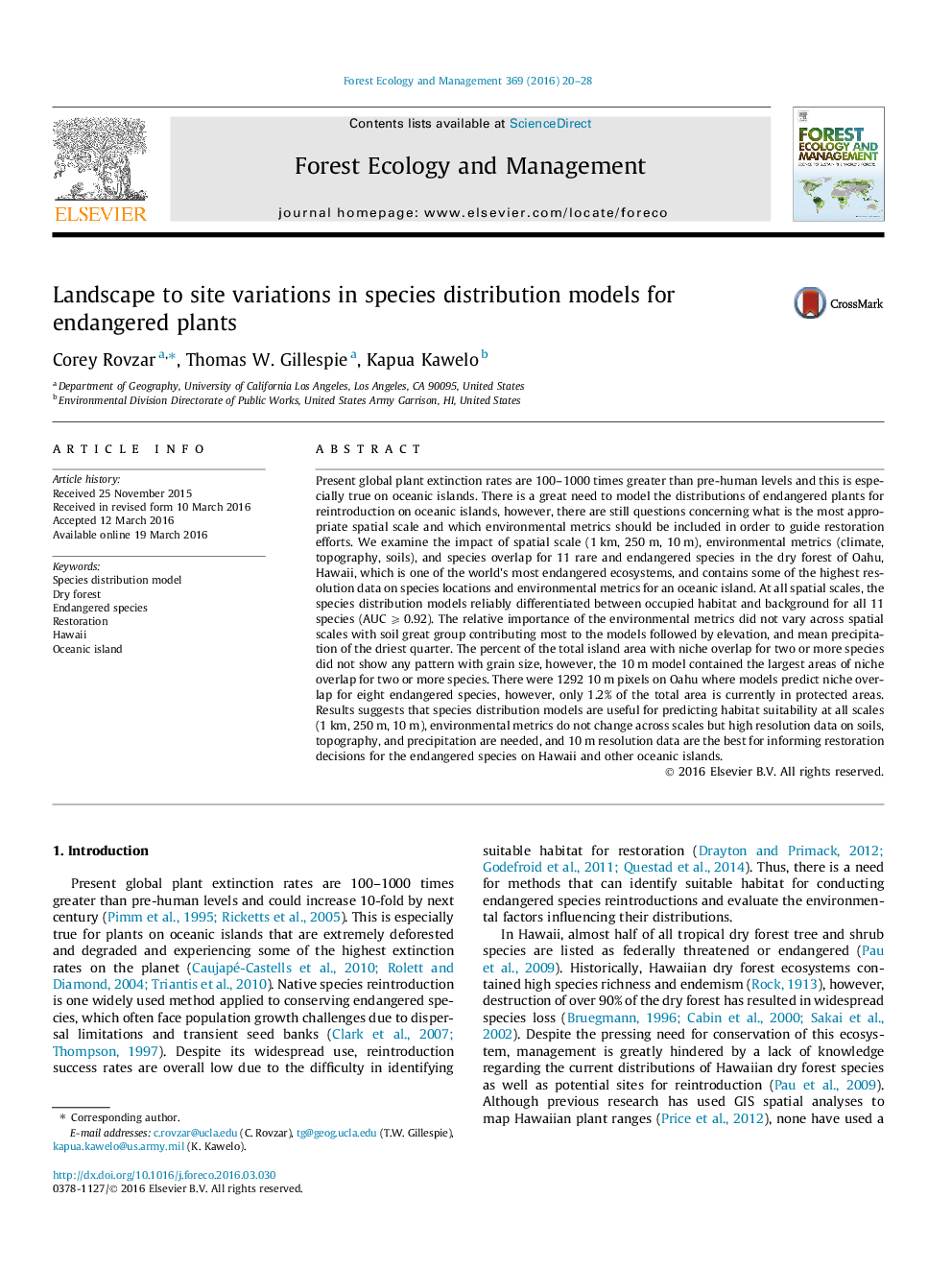| کد مقاله | کد نشریه | سال انتشار | مقاله انگلیسی | نسخه تمام متن |
|---|---|---|---|---|
| 85925 | 159152 | 2016 | 9 صفحه PDF | دانلود رایگان |
• A framework for modeling habitat suitability for rare plants in novel ecosystems is proposed.
• Species distribution models were reliable at 1 km, 250 m, and 10 m spatial scales for 11 species.
• Soil and topography were the strongest predictors of habitat suitability for 11 Hawaiian species.
• There was niche overlap for 8 species in 1292 10 m by 10 m areas on Oahu.
• Only 1.2% of the total area of predicted species niche overlap is found in protected areas.
Present global plant extinction rates are 100–1000 times greater than pre-human levels and this is especially true on oceanic islands. There is a great need to model the distributions of endangered plants for reintroduction on oceanic islands, however, there are still questions concerning what is the most appropriate spatial scale and which environmental metrics should be included in order to guide restoration efforts. We examine the impact of spatial scale (1 km, 250 m, 10 m), environmental metrics (climate, topography, soils), and species overlap for 11 rare and endangered species in the dry forest of Oahu, Hawaii, which is one of the world’s most endangered ecosystems, and contains some of the highest resolution data on species locations and environmental metrics for an oceanic island. At all spatial scales, the species distribution models reliably differentiated between occupied habitat and background for all 11 species (AUC ⩾ 0.92). The relative importance of the environmental metrics did not vary across spatial scales with soil great group contributing most to the models followed by elevation, and mean precipitation of the driest quarter. The percent of the total island area with niche overlap for two or more species did not show any pattern with grain size, however, the 10 m model contained the largest areas of niche overlap for two or more species. There were 1292 10 m pixels on Oahu where models predict niche overlap for eight endangered species, however, only 1.2% of the total area is currently in protected areas. Results suggests that species distribution models are useful for predicting habitat suitability at all scales (1 km, 250 m, 10 m), environmental metrics do not change across scales but high resolution data on soils, topography, and precipitation are needed, and 10 m resolution data are the best for informing restoration decisions for the endangered species on Hawaii and other oceanic islands.
Journal: Forest Ecology and Management - Volume 369, 1 June 2016, Pages 20–28
